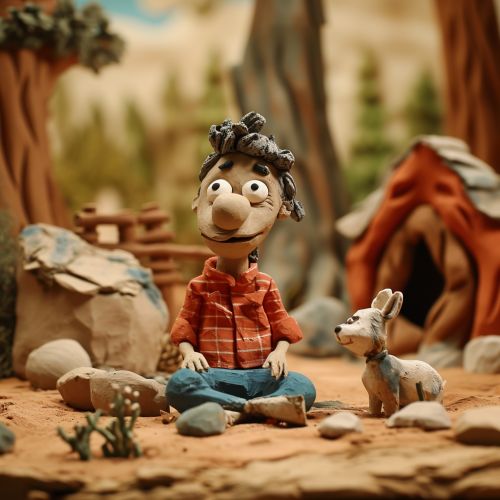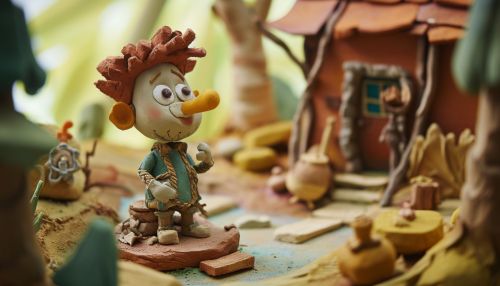Claymation
Overview
Claymation is a form of stop-motion animation that uses clay or a similar malleable material to create the animated figures. The term "claymation" is a portmanteau of "clay" and "animation". This technique is distinguished by its tactile, handmade aesthetic and the illusion of life it imparts to inanimate objects.


History
Claymation has a rich history dating back to the early 20th century. The first known clay animation film, called "The Sculptor's Nightmare", was produced by Edison Studios in 1908. However, it wasn't until the mid-20th century that claymation began to gain widespread recognition, largely due to the work of artists like Art Clokey, creator of the popular television series Gumby, and Will Vinton, who coined the term "claymation" and won an Academy Award for his innovative work in the field.
Techniques
Creating a claymation film involves a meticulous process. First, the animator sculpts the characters and sets out of clay or a similar material. The figures are often built around a wireframe to provide stability and allow for more fluid movement. The animator then positions the characters within the set, takes a photograph, and adjusts the figures slightly before taking another photograph. This process is repeated thousands of times to create the illusion of movement when the photographs are played back in rapid succession.
Applications
Claymation has been used in a variety of contexts, from short films and television series to music videos and commercials. Some of the most well-known claymation works include the aforementioned Gumby series, Vinton's California Raisins commercials, and the critically acclaimed films of Aardman Animations, such as Wallace and Gromit and Chicken Run.
Challenges and Limitations
Despite its unique aesthetic and creative potential, claymation is a time-consuming and labor-intensive process. It requires a high level of skill and patience, as well as a keen eye for detail. Furthermore, clay figures are susceptible to changes in temperature and humidity, which can cause them to warp or crack over time. These challenges have led many animators to embrace digital animation techniques, although claymation remains a beloved art form with a dedicated following.
